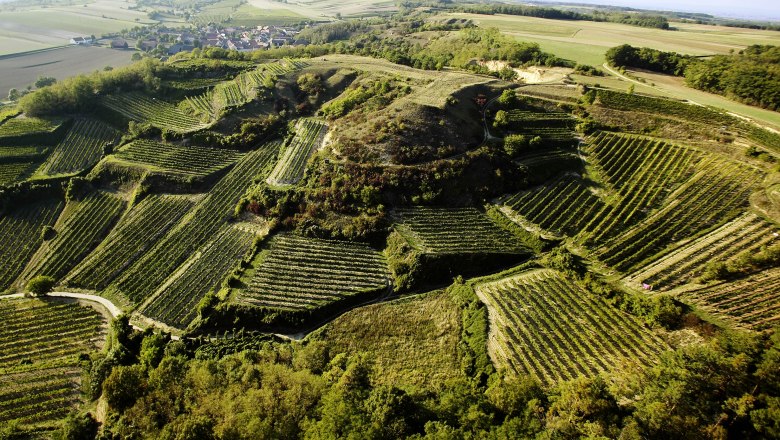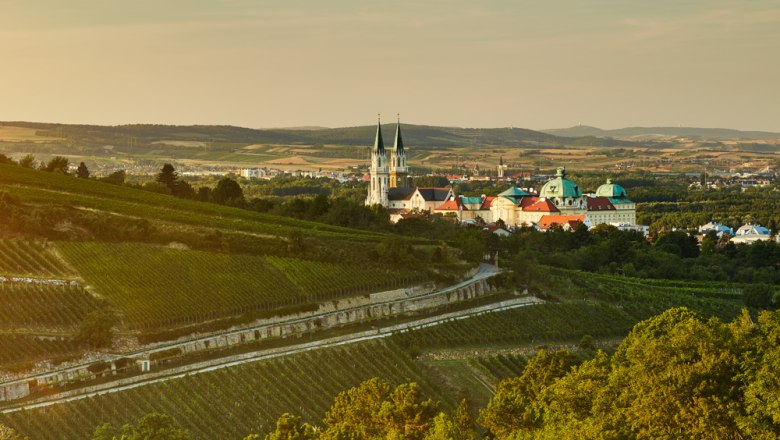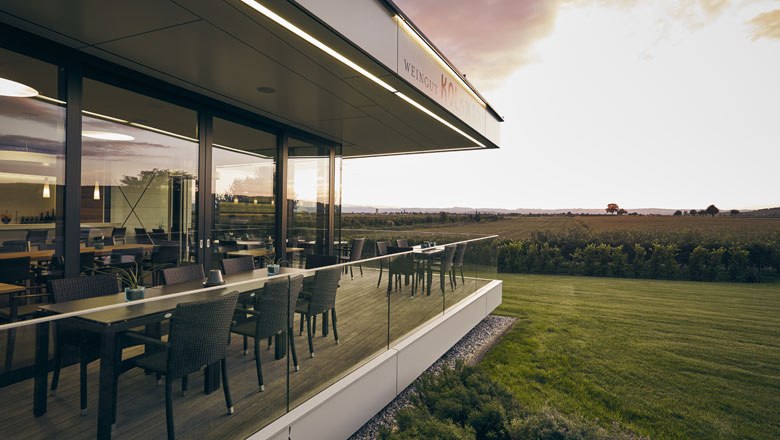Wagram
The former winegrowing region known as “Donauland” was renamed “Wagram” Wine Road in 2007 after the massive ridge of hills stretching to the east of Krems on the north side of the Danube.
This region has 2,450 ha of vineyards divided into two very different zones. Wagram itself, an impressive rise in the landscape, extends on the north side of the Danube from the Kamp Valley about 30 km to the east. To the south of the Danube are the small wine villages of the Tulln Basin; the wine road extends to the historic wine city of Klosterneuburg at the gateway to Vienna.
Wagram itself can be called an ideal winegrowing area in terms of its geological and climatic uniformity. The soil consists of loess that drifted onto the shores of the primordial ocean and formed a unique landscape. It is rich in fossils and minerals and lends the wines verifiably unique characteristics. Along with peppery Grüner Veltliners, Wagram also yields reds with distinct character and slightly tangy Frühroter Veltliners, an indigenous variety from the Wagram wine region. Weissburgunder and Riesling round out the range of whites and Zweigelt is the dominant red. Heuriger wine taverns abound throughout the Wagram wine region and are much-frequented.


